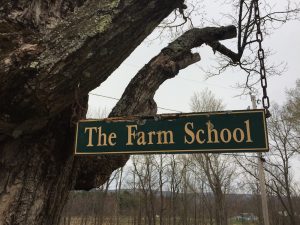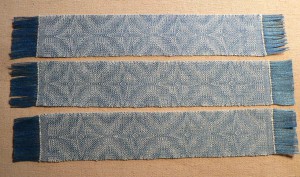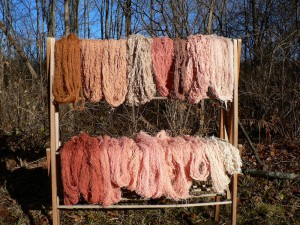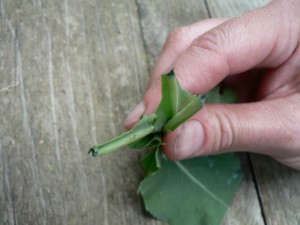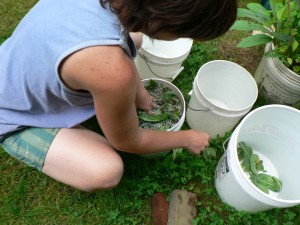Over the past year, I have had several opportunities to demonstrate flax processing and talk about natural dyeing. Here is a quick summary of four events that I didn’t get around to writing about when they happened. I just want to document and share them before too much more time passes.
Last August (2016) I did a flax processing demonstration at the Amherst History Museum, in conjunction with the art exhibit “Artifacts Inspire” by the Fiber Artists of Western Massachusetts. The museum asked the participating artists to create original works inspired by objects in the museum’s collection. Two of the pieces in the show were created by Martha Robinson, inspired by two antique hetchels, which are flax processing tools. It was great fun to show people how flax was processed in the past, and to let folks try their hand at using the tools. (12/30/2023 Edited: New links go to the Amherst History Museums’s Past Events pages.) Continue reading “Past Speaking Engagements”


